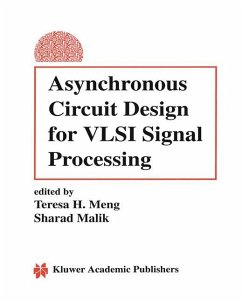
Multi-Threshold CMOS Digital Circuits
Managing Leakage Power
"Multi-Threshold CMOS Digital Circuits Managing Leakage Power discusses the Multi-threshold voltage CMOS (MTCMOS) technology, that has emerged as an increasingly popular technique to control the escalating leakage power, while maintaining high performance. The book addresses the leakage problem in a number of designs for combinational, sequential, dynamic, and current-steering logic. Moreover, computer-aided design methodologies for designing low-leakage integrated circuits are presented. The book give an excellent survey of state-of-the-art techniques presented in the literature as well as pr...
"Multi-Threshold CMOS Digital Circuits Managing Leakage Power discusses the Multi-threshold voltage CMOS (MTCMOS) technology, that has emerged as an increasingly popular technique to control the escalating leakage power, while maintaining high performance. The book addresses the leakage problem in a number of designs for combinational, sequential, dynamic, and current-steering logic. Moreover, computer-aided design methodologies for designing low-leakage integrated circuits are presented. The book give an excellent survey of state-of-the-art techniques presented in the literature as well as proposed designs that minimize leakage power, while achieving high-performance.
Multi-Threshold CMOS Digital Circuits Managing Leakage Power is written for students of VLSI design as well as practicing circuit designers, system designers, CAD tool developers and researchers. It assumes a basic knowledge of digital circuit design and device operation, and covers a broad range of circuit design techniques. "
Multi-Threshold CMOS Digital Circuits Managing Leakage Power is written for students of VLSI design as well as practicing circuit designers, system designers, CAD tool developers and researchers. It assumes a basic knowledge of digital circuit design and device operation, and covers a broad range of circuit design techniques. "













